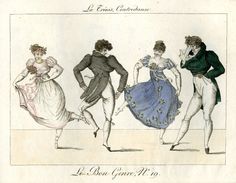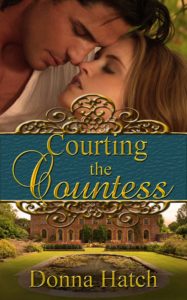©Cheryl Bolen
In the century and half since the last princess died, no one has ever before had the fortitude to chronicle the lives of the six daughters of George III (1738-1820) and his wife Charlotte of Mecklenburg-Strelitz (1744-1818). Until Flora Fraser.
Fraser is the author of the 2006 book, Princesses: The Six Daughters of George III.
One of England’s premier biographers of the late Georgian era, Fraser (Beloved Emma) first became acquainted with the princesses when doing archival research for her biography (Unruly Queen) of their sister-in-law, the Prince Regent’s wife, Princess Caroline.
"Given other circumstances, the letters of these six royal sisters might have been filled only with Court gossip, pomp and fashion," Fraser writes. "Instead their correspondence makes harrowing reading, revealing the humility with which they met pain and horror, the tenacity with which they pursued their individual dreams, and the stratagems they devised to endure years of submission and indignity."
The circumstances which catapulted their lives onto a sorrowful trajectory, of course, were the intermittent bouts of the king’s insanity which commenced a nine-year regency after he was declared incompetent to rule.
His first occurrence of the illness was in 1788; it was another 23 years before the regency became official. Sadly, it was during those years the princesses came of age, only to be denied the opportunities for gaiety and marriage. The king’s illness turned a concerned mother into a domineering tyrant who deprived the princesses of any hopes for happiness.
During those years, the princesses were forced to forgo personal pleasures or aspirations for matrimony for fear it would incite another relapse in the father who was so excessively fond of his daughters.
To a one, all the princesses wished to marry, to have their own homes, to have children. Most of them would be denied these simple pleasures.
The king himself said in 1805 — when the Princess Royal was 39 and the youngest princess, Amelia, 22 — "I cannot deny that I have never wished to see any of them marry: I am happy in their company, and do not in the least want a separation."
When he spoke those words, "Royal," as the eldest sister was always called, was the only sister to have married. Her father had refused many offers for her hand, a fact that embittered her. She finally succeeded in marrying a widow, the Hereditary Prince of Wuttemberg, when she was thirty.
She was thrilled to escape "The Nunnery," a title the princesses themselves dubbed their residences at Kew Palace and Windsor Castle. She never regretted the decision to marry. While she never bore a live child, she was an indulgent mother and grandmother to her step-children and may have been the happiest of the sisters.
None of the sisters would ever become a mother, though the fourth princess, Sophia (1777-1848), gave birth secretly to an illegitimate child sired by her father’s equerry, who was more than thirty years older than she. She never married.
Amelia died of tuberculosis at the age of twenty-seven, which many think contributed to her father’s final fall into hopeless insanity. Even on her deathbed, her family would not allow Amelia to marry the young officer she had been in love with for eight years.
Her sister, Princess Augusta (1768-1840), also fell in love with a military man, Gen. Sir Brent Spencer. When she was 43 she wrote a letter to the regent that begged to be allowed to marry the man who had shared her "mutual affection" for twelve years. Request refused, she died a spinster.
Princess Mary had more luck. She demanded the regent allow her to wed her cousin, the Duke of Gloucester, whose father was her father’s brother. The regent reluctantly agreed. At age forty, she finally married. While it is doubtful she was in love with her husband, she relished the first liberty she had ever tasted.
The sister who had most wanted to marry and had dreamed of bearing a child, Princess Elizabeth, finally was granted one of her wishes. At age forty-eight and well past child-bearing years, she married the Landgrave of Hesse-Homburg and had a happy marriage for eleven years.
Fraser’s research is meticulous, right down to the names of the royal wet nurses and the salary paid to them. Almost all of the research is original, delving into letters in collections, archives, and libraries across the globe, a feat that had to have taken several years.
For the casual reader, there are a few problems. First, it is difficult to chronicle six lives at once chronologically. We get a snippet of one sister, but the narrative thread drops while there is an awkward transition to another sister because of chronological constraints. Therefore, the book makes for dry reading and lacks dramatic structure.
For the historian, this work is a gem.—Cheryl Bolen’s Christmas novella, ExSpinster by Christmas, releases on Nov. 15.






 By the Regency Era, dueling was outlawed. However, duels still happened more frequently than many people knew. The problem was, because courts were made up of peers, they were reluctant to charge another peer with murder as a result of a duel. There is a case where one nobleman was charged with murder and tried, but used the defense that his behavior was gentlemanly and honorable, meaning that he acted within the proper code of conduct. He was acquitted by his peers.
By the Regency Era, dueling was outlawed. However, duels still happened more frequently than many people knew. The problem was, because courts were made up of peers, they were reluctant to charge another peer with murder as a result of a duel. There is a case where one nobleman was charged with murder and tried, but used the defense that his behavior was gentlemanly and honorable, meaning that he acted within the proper code of conduct. He was acquitted by his peers.







